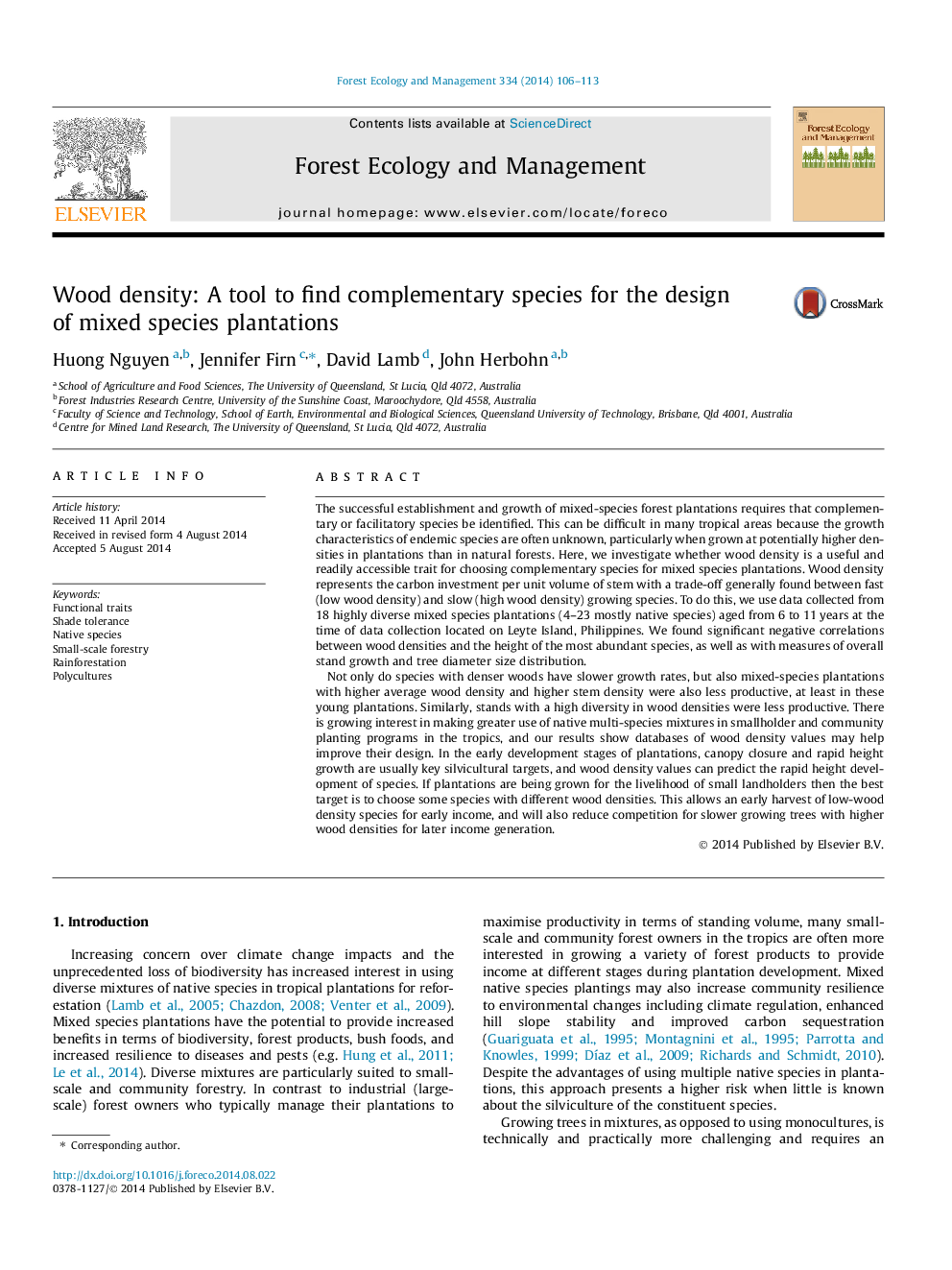| Article ID | Journal | Published Year | Pages | File Type |
|---|---|---|---|---|
| 6543101 | Forest Ecology and Management | 2014 | 8 Pages |
Abstract
Not only do species with denser woods have slower growth rates, but also mixed-species plantations with higher average wood density and higher stem density were also less productive, at least in these young plantations. Similarly, stands with a high diversity in wood densities were less productive. There is growing interest in making greater use of native multi-species mixtures in smallholder and community planting programs in the tropics, and our results show databases of wood density values may help improve their design. In the early development stages of plantations, canopy closure and rapid height growth are usually key silvicultural targets, and wood density values can predict the rapid height development of species. If plantations are being grown for the livelihood of small landholders then the best target is to choose some species with different wood densities. This allows an early harvest of low-wood density species for early income, and will also reduce competition for slower growing trees with higher wood densities for later income generation.
Related Topics
Life Sciences
Agricultural and Biological Sciences
Ecology, Evolution, Behavior and Systematics
Authors
Huong Nguyen, Jennifer Firn, David Lamb, John Herbohn,
